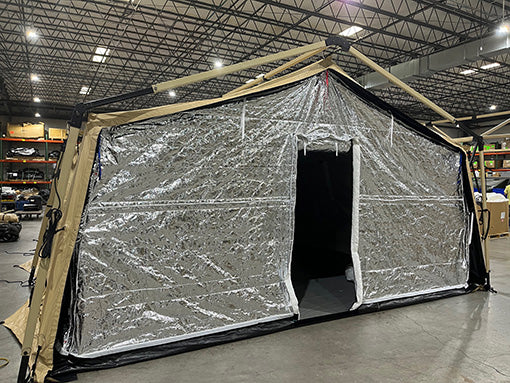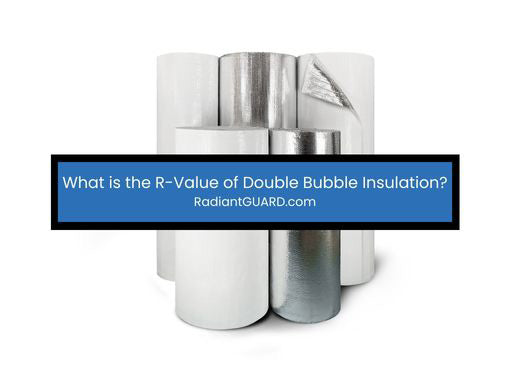Managing heat in buildings saves energy, improves comfort and lowers utility bills. Radiant barriers are exceptional building materials for managing heat. They block a majority of heat by reflecting it away. To understand how radiant barriers work, it’s important to understand the concepts of reflectivity and emissivity. These concepts explain how a radiant barrier blocks heat.
Reflectivity: Bouncing Heat Back
Reflectivity describes how much heat a surface reflects; radiant heat to be exact. It is listed as a percentage from 0% to 100%, and measures how much heat is bounced back (i.e. not absorbed). High reflectivity means more heat is reflected away.
All building materials reflect heat. For example, a common brick reflects on average 30% of the sunlight (radiant heat) that hits it (meaning 70% is absorbed) whereas a common shingled roof reflects only 10% (absorbing 90% of the heat).



In contrast to bricks, shiny metals, like aluminum, are highly reflective. They reflect most of the heat that comes in contact with them. That’s why radiant barriers are made of aluminum. Highly reflective aluminum installed in the attic reflects heat away from living spaces.
A reflective product must reflect more than 90% of the heat in order to be classified as a radiant barrier per ASTM International. RadiantGUARD radiant barriers reflect 95% of the radiant heat.
Emissivity: Releasing Stored Heat
Emissivity describes how much heat a surface gives off. It is listed as a percentage and is inversely proportional to the reflectivity of the material. In other words, the emissivity and the reflectivity added together equal 100%.
A low emissivity number means less heat is emitted from the surface. Because radiant barriers are highly reflective (90% or higher), they have low emissivity, stopping a majority of heat from radiating from its surface.
For example, in the common brick example above that reflects 30% of radiant heat, it absorbs the remaining 70% and emits the full 70% from itself. But in the case of a RadiantGUARD radiant barrier that reflects 95% of the radiant heat, only 5% is absorbed and 5% is emitted from itself.
Why An Air Space Matters
Radiant heat moves through air. Therefore, reflectance and emittance of radiant heat can only occur through air. If there is no air space between two materials, then heat moves by contact; via conduction.
Radiant barriers are only effective at reflecting high amounts of radiant heat and emitting very low amounts of radiant heat and therefore, they need an air space on at least one side when installed. Radiant barriers are not effective at stopping conductive heat. Without an airspace, a radiant barrier will conduct 100% of the heat through itself.
Learn more about how to install radiant barrier.
Conclusion
Effective control of heat can be achieved when addressing radiant heat. Radiant barriers are the product of choice due to their high reflectivity and low emissivity; the winning characteristics of reflective products. When installed properly with an air space, RadiantGUARD radiant barriers significantly lower the transfer of radiant heat into an attic space in summer months, creating a cooler attic and lower utility bills.
Visit RadiantGUARD.com for more information or contact us today toll free (866) 528-8412 for technical advice or to place an order for radiant barrier for your project.






